44% of customers decide to play the lottery when jackpot amounts skyrocket. With jackpots soaring to the billions in the last few years, that’s a lot of tickets sold both online and in-store.
Lottery marketing is complex, but a strategic approach makes all the difference.
This guide covers key lottery marketing strategies, from audience insights and creative best practices to location targeting and jackpot promotions.
Your Lottery Audience Lifecycle
A successful lottery marketing campaign starts with knowing your players. Segmenting your audience lets you understand whether they’re first-timers, loyal fans, or just need a nudge to come back.
Let’s delve into strategies for engaging each segment.
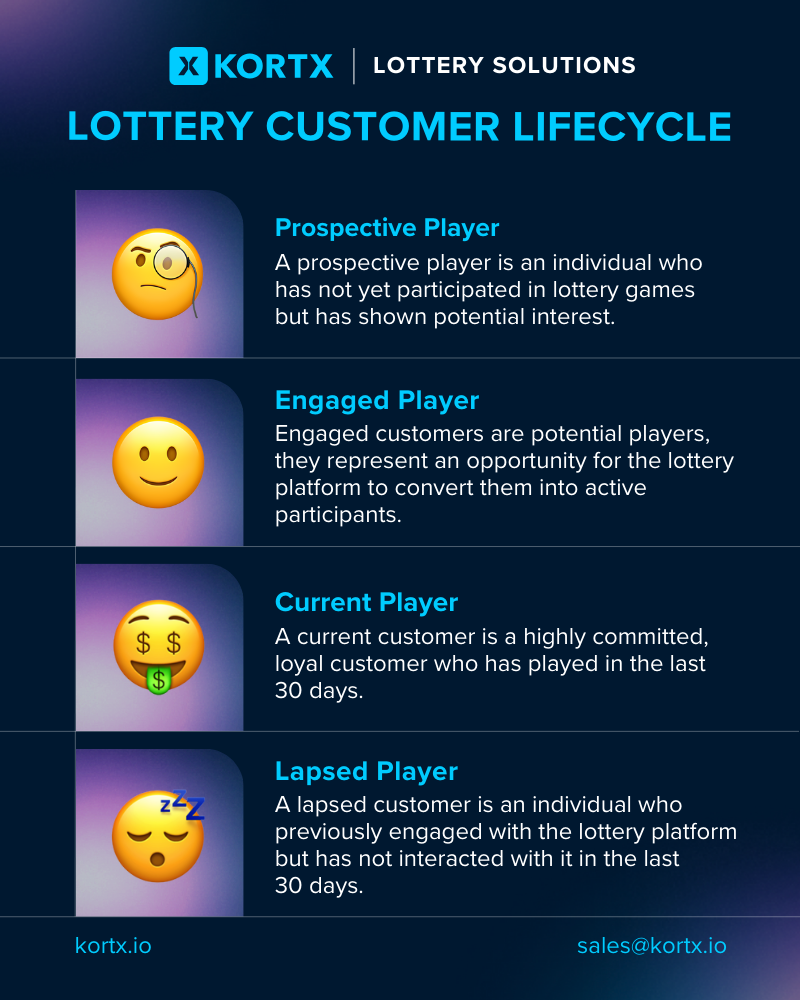
🤔 Prospective Player (New & Interested)
A prospective player is an individual who has not yet participated in lottery games but has shown potential interest. This segment represents a valuable opportunity for lottery platforms to expand their player base.
Characteristics of Prospective Players:
- They have not purchased or played any lottery games to date.
- They may have engaged with lottery-related content, such as visiting lottery websites or following lottery social media accounts.
🙂 Engaged Player (Interested But Not Yet Active)
The engaged customer is a user who has shown a certain level of interest or commitment to the lottery platform or games, but has not yet played.
Engaged customers are considered potential players, and they represent an opportunity for the lottery platform to convert them into active participants.
- They have recently engaged with the lottery platform and may have shown interest by signing up for newsletters, downloading the lottery app, or interacting with the platform in some way.
- They are interested in being active in playing lottery games.
- They are an important segment for lottery marketing as they’re likely to contribute to the current revenue stream.
🤑 Current Player (Active in the Last 30 Days)
A current player is someone who has played in the last 30 days. They know the game, love the thrill, and are the most likely to engage with your brand.
They actively participate in lottery games, demonstrating higher involvement, interaction, and loyalty to the platform(s).
- They may exhibit behaviors such as providing feedback, entering contests, or interacting with the platform beyond just making purchases.
- They are more likely to respond positively to marketing efforts aimed at enhancing their experience or encouraging further involvement.
😴 Lapsed Player (Inactive for 30+ Days):
A lapsed player previously engaged with the lottery but hasn’t played in 30+ days.
- They have a history of participation in the lottery platform.
- They have not engaged with the platform for a notable duration, suggesting a decline in activity or interest.
- They represent a potential segment for targeted marketing efforts to re-engage and reignite their interest in lottery games.

“Regulatory Compliance and Responsible Gaming are extremely important aspects of Lottery advertising. First, it is important to clearly understand the rules and regulations that apply to your particular jurisdiction. Many jurisdictions work to be certified by the WLA (World Lottery Association) for how they treat Responsible Gaming. A working relationship with the Lottery’s CSR (corporate social responsibility) team is important to navigating this complicated landscape.”
Joe Botich, VP of Brand Strategy, KORTX
Marketing Funnel for Lottery Campaigns
A strong marketing funnel builds excitement at every stage. The right ad formats turn casual interest into ticket sales.
A full funnel lottery advertising campaign might look like:
- Video to Drive Awareness: High-impact video ads on Connected TV (CTV), YouTube, and social media generate buzz around massive jackpots and upcoming draws. Think cinematic storytelling that gets people dreaming about their big win.
- Rich Media to Drive Engagement: Interactive ads, countdown timers, and expandable banners hold players’ attention. Urgency and interactivity make them more likely to take action.
- Display to Drive Revenue: Retargeting and direct-response display ads nudge players toward action. With geo-targeted messaging and strong CTAs, you guide them straight to a purchase—whether online or at their nearest retailer.
By aligning ad formats with the customer journey, you ensure your lottery marketing strategy is a surefire winner.
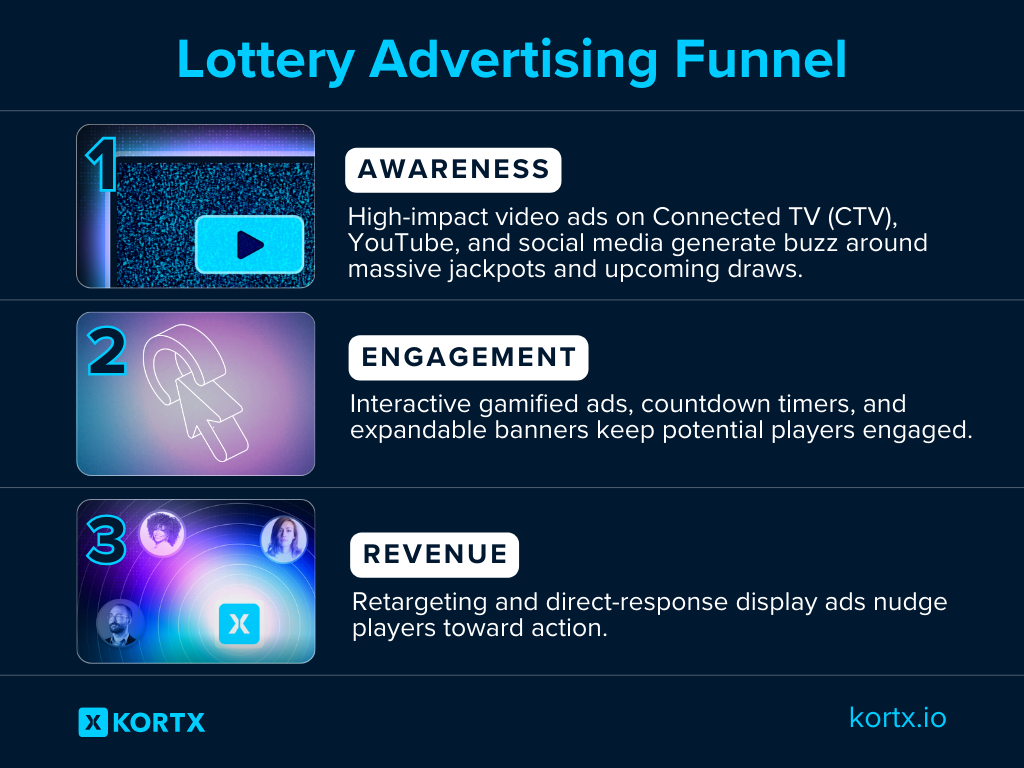
Lottery Marketing Calendar (2025)
Big wins don’t happen by accident. Jackpot rollovers fuel ticket sales, and a powerhouse marketing calendar keeps engagement high. Stay organized, stay ahead, and keep players coming back.
Here’s how to structure your campaigns month by month for consistent success.
🏆 Q1: New Year, New Wins (January – March)
- Kickstart the Year with Excitement: New year, new chances to win. Resolutions-themed campaigns attract players, while limited-time games keep the excitement going.
- Refresh Your Product Lineup: Introduce new instant games or scratch-offs to keep offerings exciting.
- Analyze & Adjust for Success: Dive into last year’s sales data to refine strategies and optimize future campaigns.
Pro Tip: Use geo-targeted ads to capture new players returning from holiday travel.
🌷 Q2: Spring Into Engagement (April – June)
*Lotteries operating on a July–June fiscal calendar should lock in promotional plans before the fiscal year ends.
- Seasonal Promotions That Convert: Run Easter or Mother’s Day-themed games to spark seasonal interest.
- Prepare for the Fiscal Year-End: Finalizing budgets? Now’s the time to tweak marketing spend, evaluate vendor contracts, and set goals for the next fiscal cycle.
- Showcase Community Impact: Promote how lottery funds support public programs and good causes to strengthen brand trust.
☀️ Q3: Summer Fun & Fresh Starts (July – September)
- New Budget, New Goals: Kick off the Fiscal Year strong with the launch fresh campaigns that align with fiscal-year targets.
- Tourism-Focused Promotions: Leverage travel season by running geo-targeted ads in high-traffic vacation areas.
- Back-to-School Buzz: Promote lottery contributions to education, tying into scholarship programs or school funding initiatives.
🎄 Q4: Holiday Magic & Big Jackpots (October – December)
- Make the Holidays More Exciting: Scratch-offs make perfect holiday gifts. Seasonal games and festive promotions add to the excitement.
- Year-End Jackpot Momentum: Historical trends show that holiday season rollovers drive higher ticket sales, so build excitement with social media teasers, countdowns, and jackpot awareness campaigns.
- Giving Back to the Community: Highlight how lottery proceeds support local charities, making giving season even more meaningful.
Precision Targeting Strategies
Lottery marketing is all about timing. With strict regulations and different player habits, a generic approach won’t work. A winning lottery marketing strategy blends First-Party data modeling, Third-Party audience expansion, and precise location-based targeting to maximize reach while ensuring compliance.
These tactics combine to create a high-impact, data-driven approach to lottery campaigns.
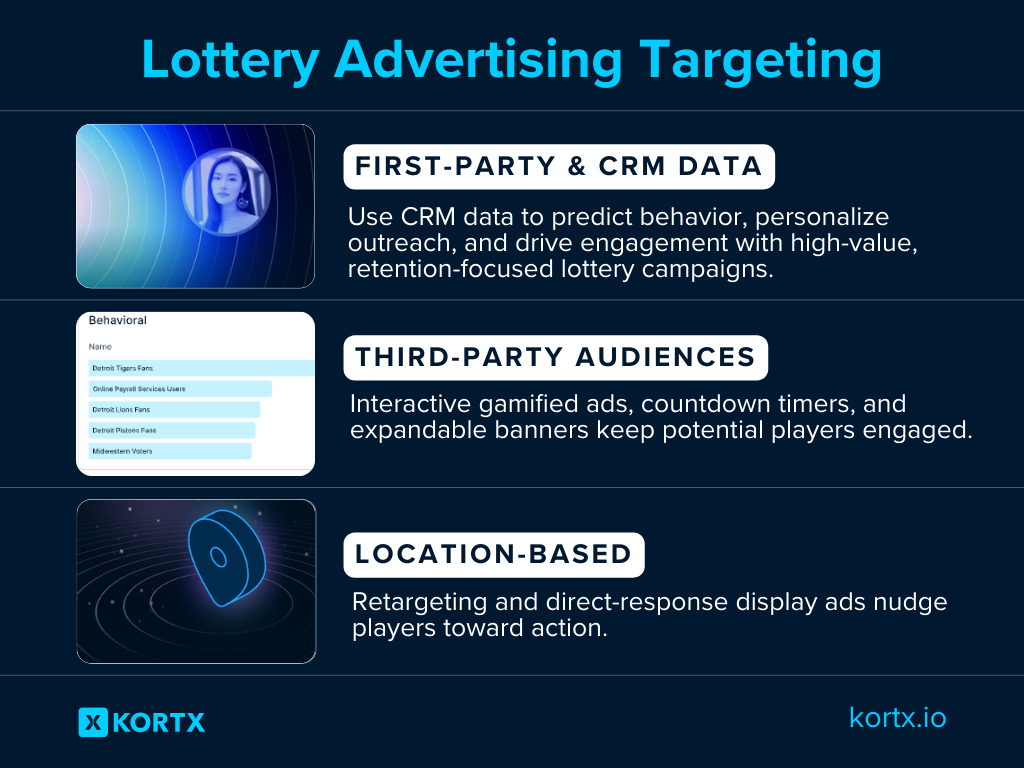
🎯 First-Party & CRM Data
Your First-Party data (ticket purchases, online registrations, and loyalty program insights) is a valuable resource for understanding player behavior. By leveraging CRM data and predictive modeling, lottery marketers can:
- Build high-value lookalike audiences based on previous purchasers and engaged users.
- Drive new online registrations by identifying users most likely to play and delivering personalized messaging.
- Enhance retention efforts by targeting past players with promotions that match their buying habits.
With privacy regulations tightening, First-Party data is more valuable than ever. Marketers who use it effectively gain a competitive edge while maintaining compliance.
📢 Third-Party Audiences
While First-Party data helps refine existing player engagement, Third-Party audience segments are essential for finding new players who haven’t yet interacted with lottery games.
Here’s how different segments can be leveraged:
- Adults 21+ – Ensures age-appropriate targeting and compliance.
- Sports Enthusiasts – Engages fans already in the habit of placing bets or engaging with game-day activities.
- C-Store Shoppers – Captures frequent convenience store visitors, where lottery tickets are a key point of sale.
- Gaming Enthusiasts – Reaches individuals interested in casino gaming, video gaming, and other forms of entertainment-based wagering.
- Sports Gambling Audiences – Targets legal sports bettors comfortable with high-stakes play.
By layering Third-Party data with First-Party insights, lottery marketers expand their reach while ensuring ads are served to relevant, engaged audiences.
📍 Location-Based Targeting
Precision matters in lottery marketing—not just for engagement but also for regulatory compliance. A strong location-based strategy ensures campaigns stay within legal boundaries while maximizing effectiveness.
- Regulatory Adherence & Compliance
Lottery participation is governed by state-specific regulations, making location targeting a must-have rather than a nice-to-have.
Geo-restrictions ensure:
- Ads are only served in states where lottery participation is legal.
- Marketing efforts remain compliant, reducing risk and maintaining trust with players and regulators.
- Tailored Messaging for Maximum Impact
What excites a player in New York might not resonate in Texas—that’s where location data comes in. By segmenting messaging based on regional interests and promotions, lottery campaigns can:
- Promote state-specific jackpot sizes or exclusive scratch-off games.
- Adjust creatives to highlight regional winners, boosting credibility and excitement.
- Optimize ad frequency to align with local buying patterns.
- Driving Foot Traffic to Retailers
Location-based ads help convert nearby players into buyers for lotteries that rely on in-store sales. Strategies include:
- Proximity targeting to serve ads when players are near a lottery retailer.
- Click-to-map functionality directs users to their closest ticket purchase location.
- Limited-time in-store promotions to incentivize visits.
- Capitalizing on Local Events & Trends
Aligning campaigns with major sports events, holidays, or community celebrations drives engagement by tapping into existing excitement.
Examples include:
- Featuring Super Bowl-themed lottery promotions for sports fans.
- Running holiday jackpot campaigns to boost sales when people are in a gifting mindset.
- Leveraging local festivals or state fairs for regionally relevant activations.
Real-Time Dynamic Ads & Jackpot Triggers
Bigger jackpots mean more ticket sales. Dynamic ads ensure players see the latest winning opportunity. These ads automatically update through an RSS feed, ensuring potential buyers receive the latest jackpot information. This real-time advertising can lead to an increase in ticket sales.
Lottery triggers automate content adjustments, responding in real-time when jackpots hit specified thresholds (like $150,000,000.) Developed from RSS feeds, they monitor crucial data updates, automatically updating ad content across platforms. This ensures maximum efficiency and relevance, driving sales during peak lottery interest, enhancing advertising effectiveness.
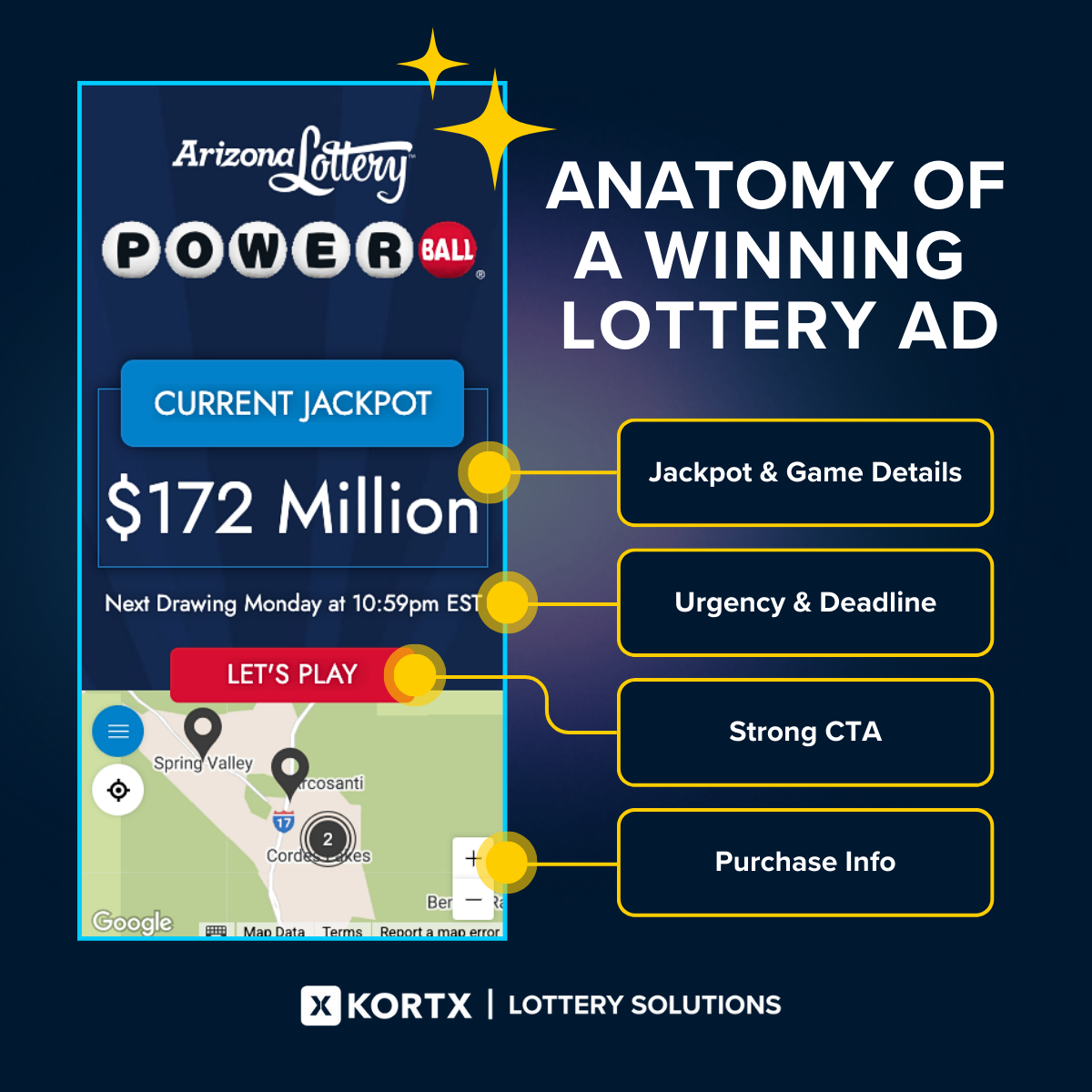
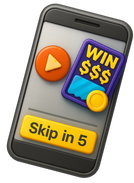
Discover how top-performing lottery ads combine real-time updates, interactive elements, and compliance to drive ticket sales. This comprehensive guide offers actionable insights for marketing teams aiming to boost engagement and conversions.
Explosive Growth of Mega Jackpots
Massive jackpots aren’t rare anymore. Half of the biggest jackpot payouts in history have occurred within the last two years. The record-breaking $2.04 billion Powerball jackpot in November 2022, won with a ticket purchased in California, set a new high bar.
These astronomical prizes are powerful marketing opportunities. While the size of the jackpot is a major draw, its true impact depends on how well it’s promoted
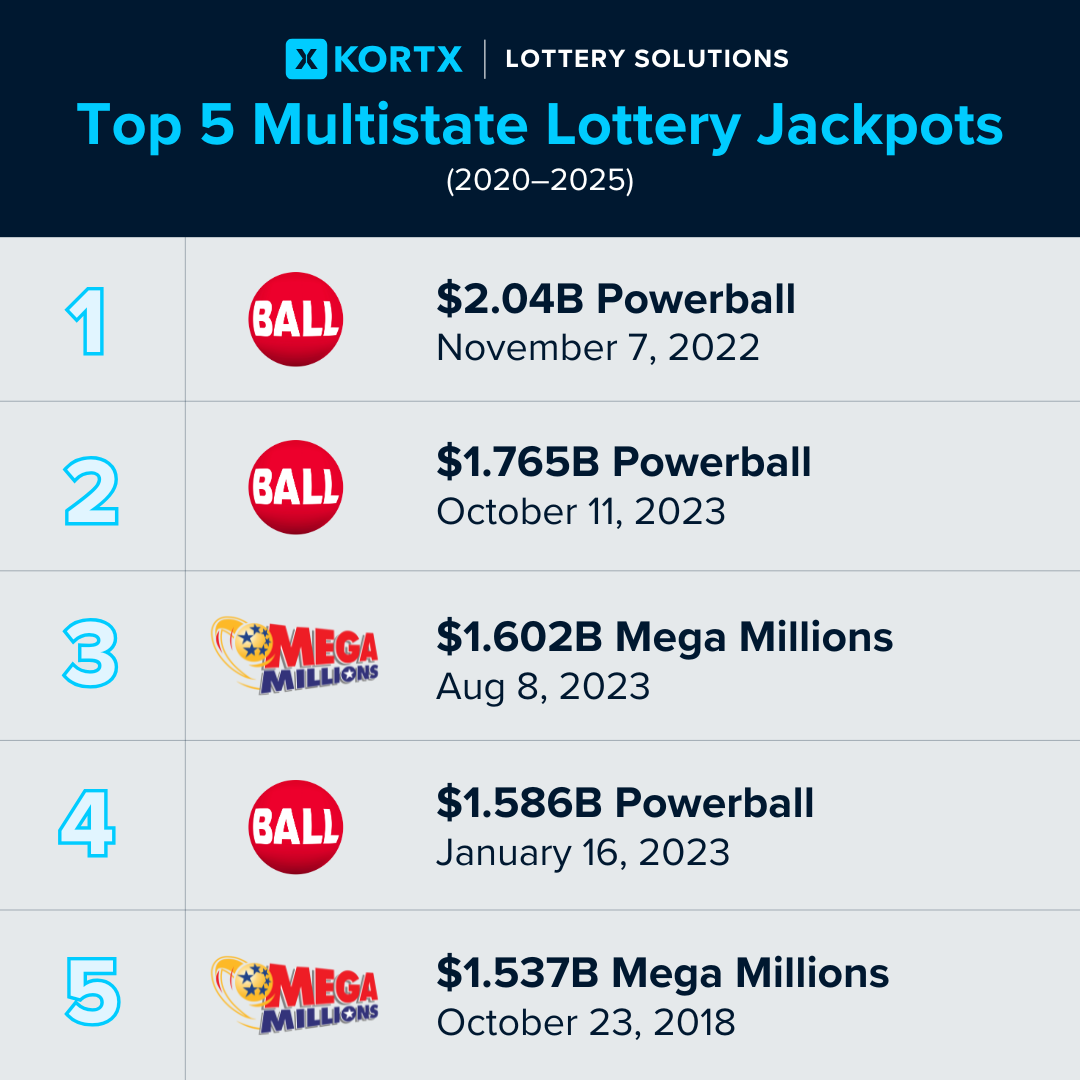
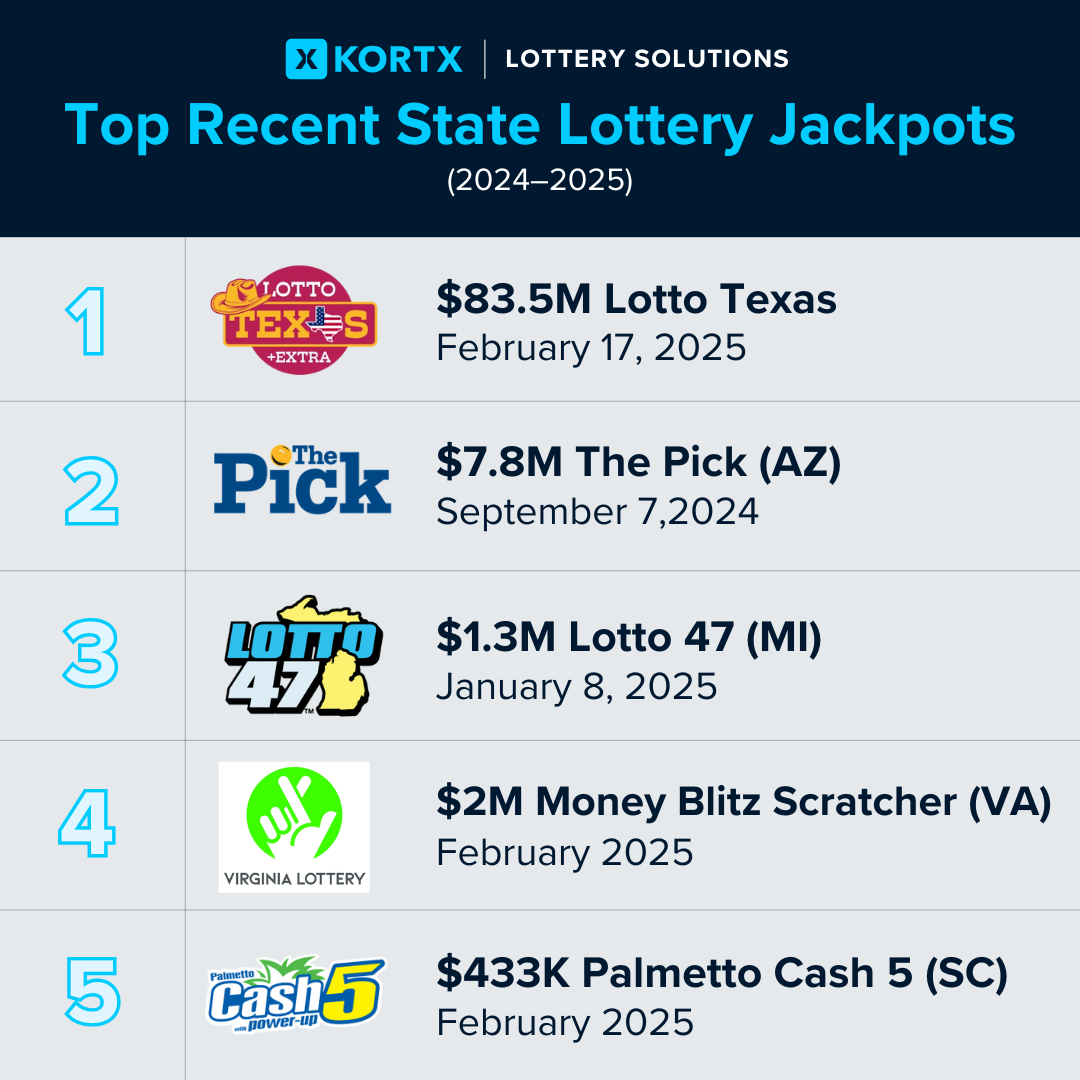

“Lottery follows the same basic marketing and advertising principles as any other industry regarding success metrics. All campaigns should initiate with a campaign measurement plan that outlines KPIs for each tactic in the campaign.
Measuring the purchase part of the funnel for in-store purchases can be particularly challenging, as lotteries seldom receive POS data. Normally, “validation-based sales” track in-store lottery sales from Scratch-off tickets. This implies that the lottery is unaware of individual ticket sales’ timing, but they know when a winning ticket gets redeemed, indicating that all other tickets in that roll have been sold. Store visitation studies can be employed to overcome this challenge.”
Joe Botich, VP of Brand Strategy, KORTX
Online vs. In-Store Marketing Strategies
Lottery players aren’t just hoping for a jackpot. They engage with digital touchpoints before buying. Tracking these interactions helps refine targeting and boost conversions. Here’s how to use First-Party data, media strategies, and dynamic creative to maximize online lottery sales.
Online Lottery Ticket Sales
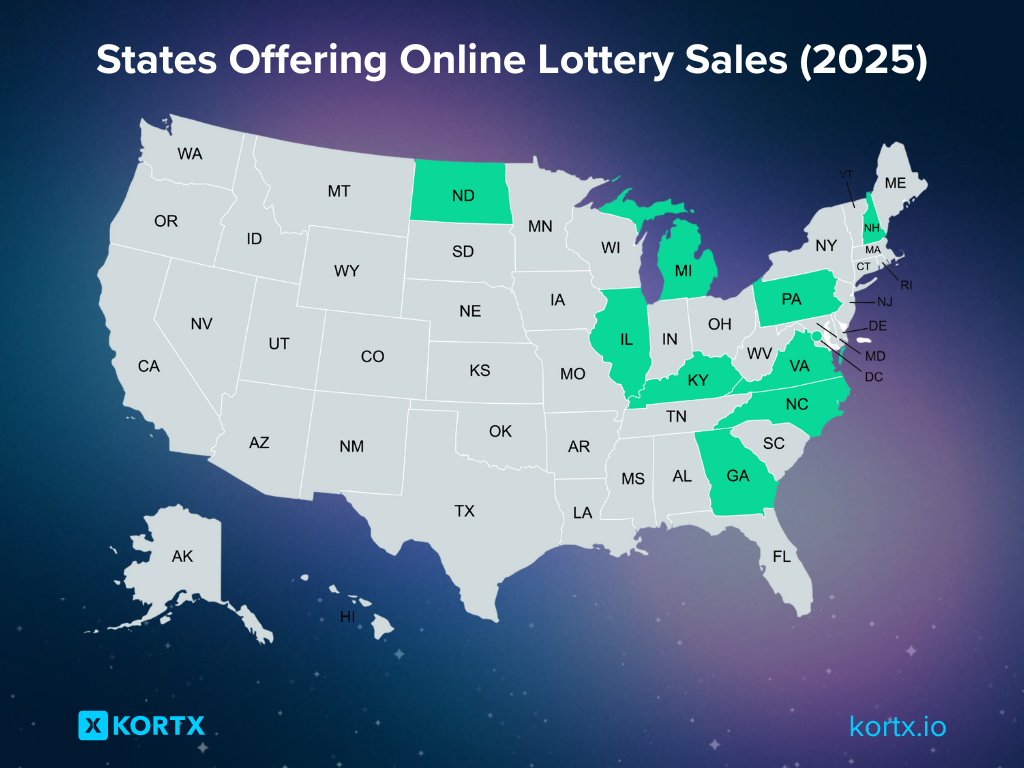
States offering online and retail lottery sales can enhance audience targeting by leveraging First-Party data from site activities like game purchases and add-to-cart actions.
States with Online Lottery Sales: Georgia, Illinois, Kentucky, Michigan, New Hampshire, North Carolina, North Dakota, Pennsylvania, Virginia, and Washington, D.C.
Media Strategy:
Maintaining an always-on digital presence ensures consistent engagement with potential players.
To reach potential players effectively, allocate media budgets towards:
- Native Display, Cross-Platform Display, and Online Video (CTV/OTT): These mid- and lower-funnel tactics guide players toward purchases.
Audience Targeting:
To effectively reach potential lottery players, it is essential to utilize both existing customer data and external sources to identify and engage likely participants.
- Leverage CRM and First-Party Data: Use current data to identify likely players based on past interactions. This includes past ticket purchasers, website visitors, and those who interacted with awareness-based ads.
- Expand with Second & Third-Party Data: To target broader audiences, focus on demographics and interests related to gaming and lottery intent.
Creative Approach:
Hook lottery players with interactive ads featuring new games, jackpot amounts, and bold “Play Now” CTAs—the bigger the jackpot, the bigger the buzz.
- Highlight New or Seasonal Games with Rich Media: Engaging, game-like ads resonate with consumers.
- Use Clear Calls-to-Action: Phrases like “Play Now” direct players on purchasing, distinguishing between online and in-store options.
- Incorporate Dynamic Elements: Custom triggers can display current jackpot amounts, increasing relevance as prize values grow.

“Ensuring a steady rotation of creative messaging is important. The best campaigns combine a mix of tactics with engaging content across interactive video, rich media, and dynamic trigger banners. With the large Mega Millions and Powerball jackpots, we have seen over the last 18 months, it is important to have creative messaging ready to be turned on when purse amounts meet certain thresholds.”
Erik Stubenvoll, Managing Director, KORTX
In-Store Lottery Marketing
In states where lottery tickets are retail-only, your online presence isn’t about selling—it’s about staying top of mind. Players visit lottery sites for contests and game details, not purchases. Strong digital engagement keeps them interested and drives in-store visits.
Implementing these strategies can promote in-store lottery purchases by enhancing player engagement and driving foot traffic to retail locations.
Media Strategy
Boost brand recognition and in-store visits with a multi-channel strategy that leverages video, digital, and out-of-home media.
Consider the following approaches:
- Native or Pre-Roll Video: Enhance awareness and complement mid- and lower-funnel tactics like cross-platform and native display ads.
- Connected TV (CTV): Deliver impactful video messages to a broad audience on household screens.
- Out-of-Home (OOH) Advertising: Utilize in-store displays and programmatic digital out-of-home (pDOOH) billboards to increase store visits and ticket sales.
Audience Targeting
Identifying and reaching potential players is crucial. Focus on First-Party data to target.
- Retail Visitors: Individuals who frequent convenience stores, pharmacies, and gas stations.
- Website Behavior Analysis: Monitor actions like sign-ins, promotion exploration, or checking winning numbers to inform targeting strategies.
- Prospecting: Expand reach by targeting audiences with a known history or intent of purchasing lottery tickets.
Creative Approach
Engaging and informative creative assets can drive in-store purchases. Consider:
- Rich Media Units: Utilize 300×600 desktop units as microsites featuring product carousels, branding imagery, and real-time location maps to guide users to nearby retailers.
- Dynamic Content Updates: Regularly update ads to reflect current jackpot amounts, motivating players to visit stores as prize values increase.
Crafting Winning Lottery Campaigns
Staying ahead requires strategic finesse and creative innovation when advertising to lotto customers. Understanding your audience, leveraging location targeting, and capitalizing on high-value jackpots alongside dynamic and engaging ad creative is the key to success.

ABOUT THE AUTHOR
Sam Wilson is a Sr. Account Executive at KORTX. He brings over a decade of experience working across various verticals on both regional and national campaigns. Sam’s expertise lies in cultivating strong client relationships, devising strategic campaigns, and delivering measurable results that exceed expectations.

